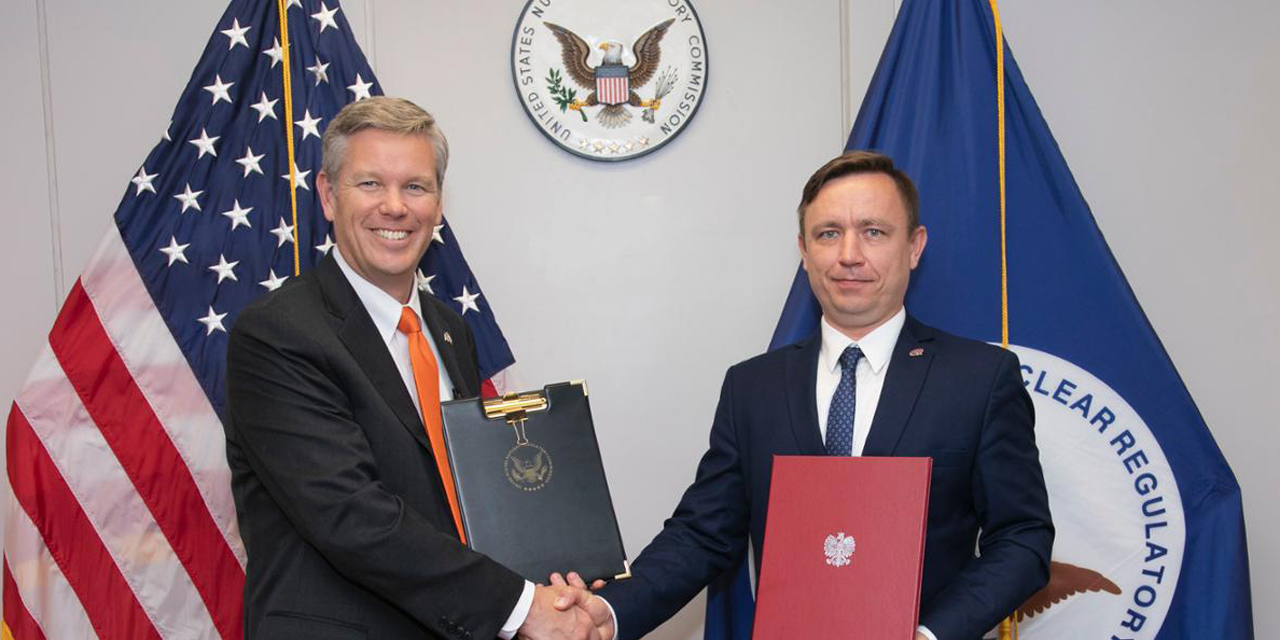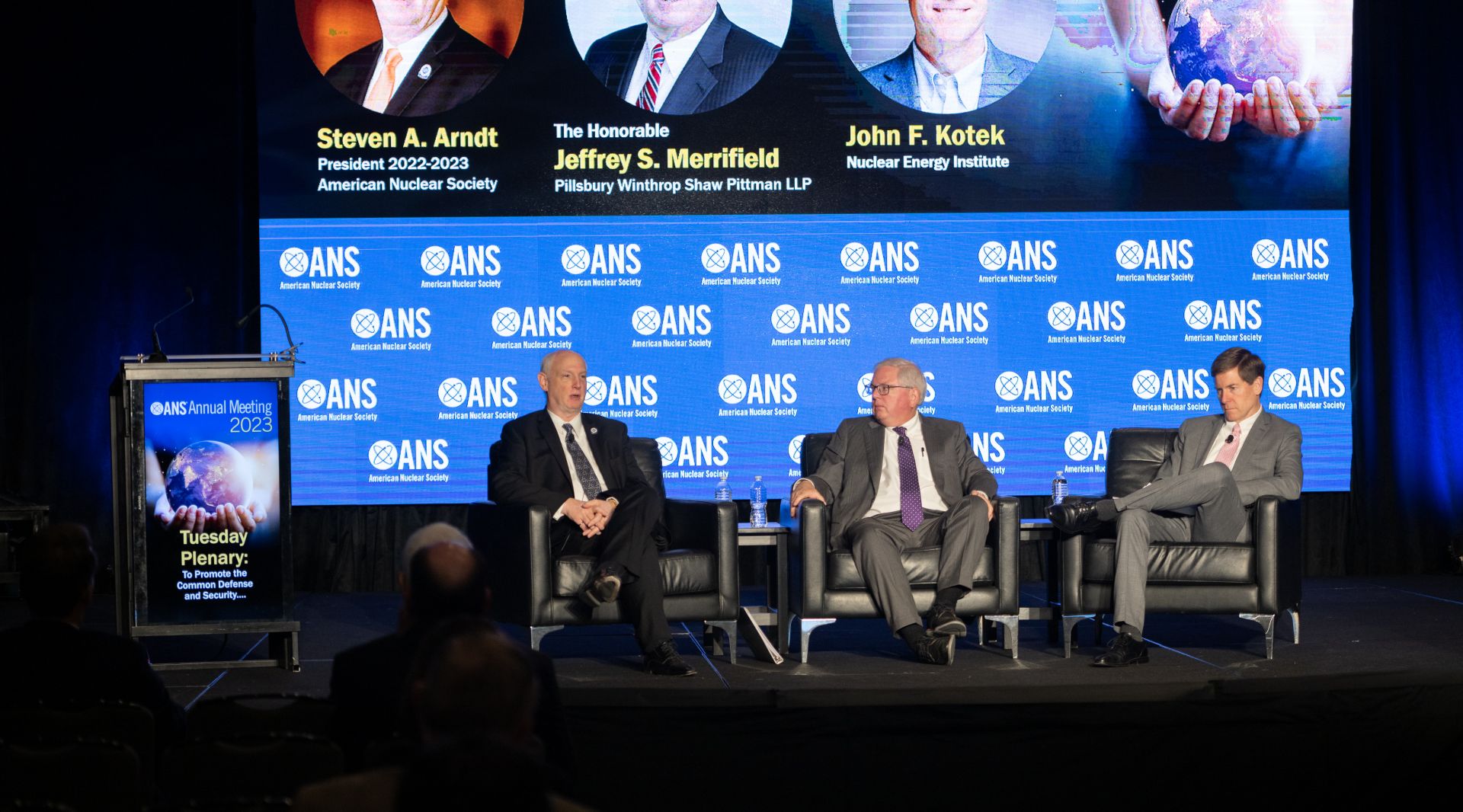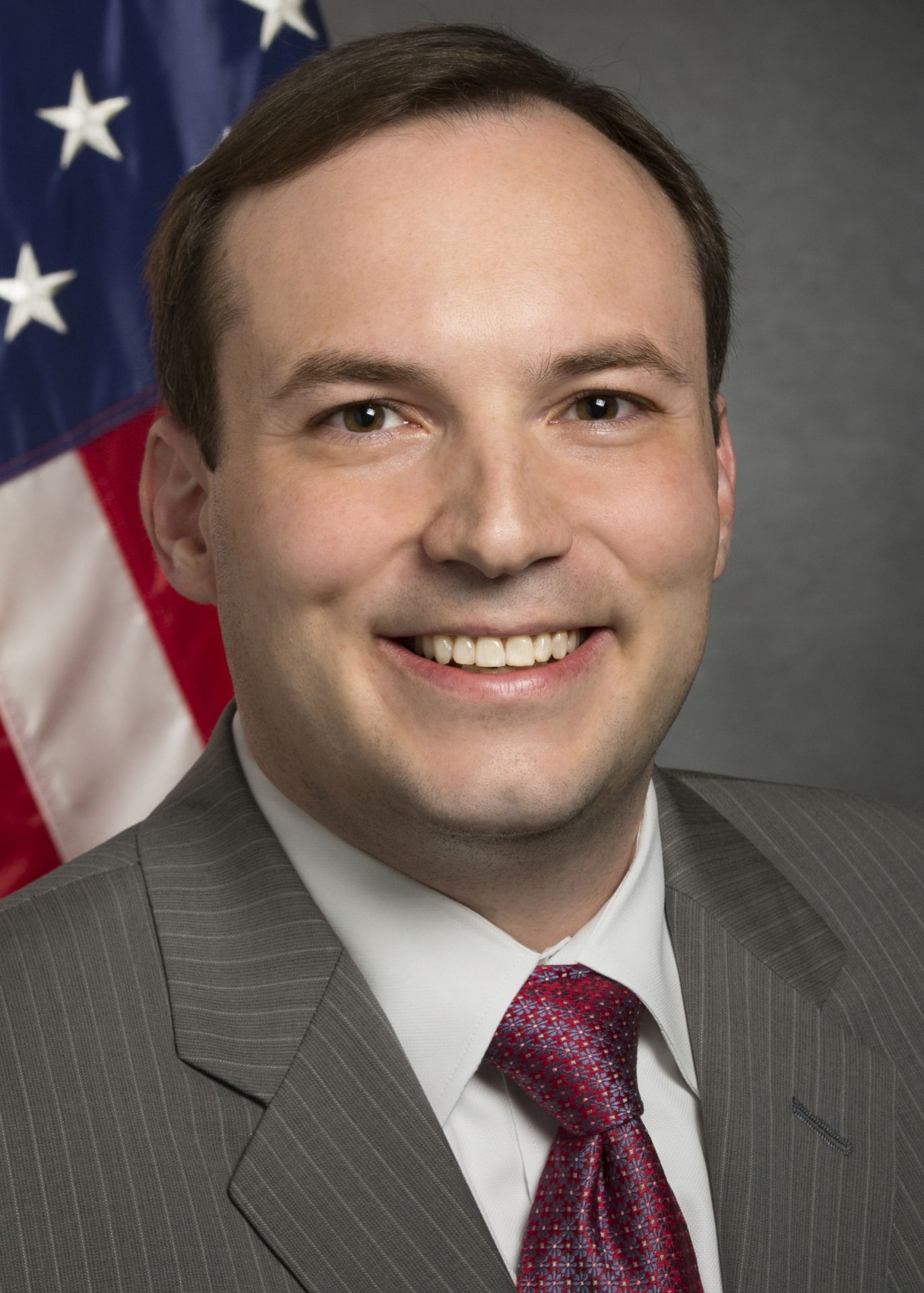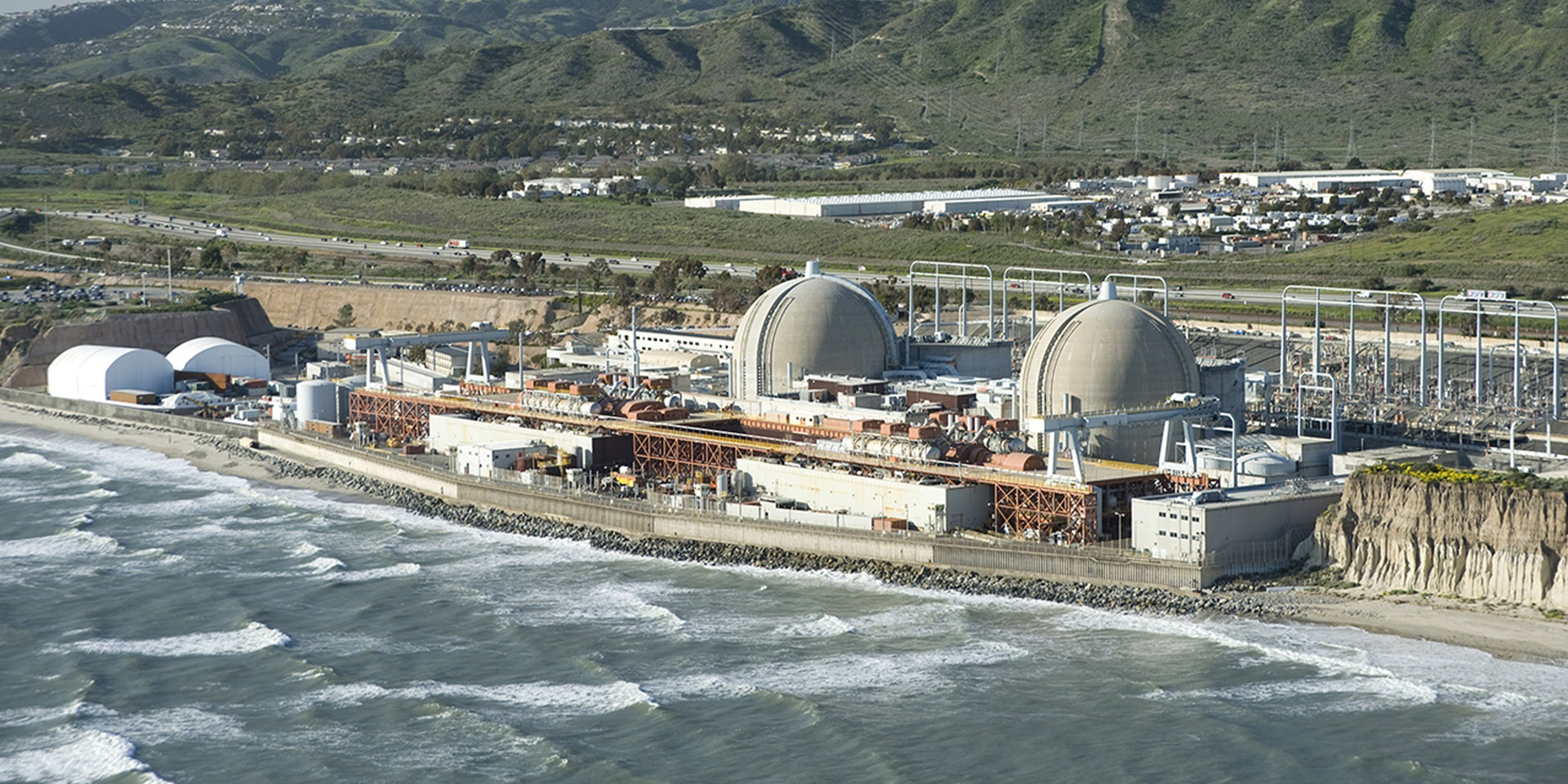U.S., Polish nuclear regulators renew pact

The Nuclear Regulatory Commission and Poland’s National Atomic Energy Agency (PAA) have renewed their cooperation agreement for the next five years.
Published since 1959, Nuclear News is recognized worldwide as the flagship trade publication for the nuclear community. News reports cover plant operations, maintenance and security; policy and legislation; international developments; waste management and fuel; and business and contract award news.

A message from NV5, Inc.
Seconds Matter: Rethinking Nuclear Facility Security for the Modern Threat Landscape

The Nuclear Regulatory Commission and Poland’s National Atomic Energy Agency (PAA) have renewed their cooperation agreement for the next five years.
Westinghouse and TerraPower, in conjunction with Belgium’s Pan Tera, have announced plans to produce large quantities of actinium-225, a radioisotope used for targeted alpha radiation therapy for certain types of cancer.
The Nuclear Regulatory Commission staff has completed its final safety evaluation for Kairos Power’s application to build its Hermes advanced test reactor at a site in Oak Ridge, Tenn., the agency announced recently. The evaluation found no safety aspects precluding issuance of a construction permit for the proposed reactor.

The American Nuclear Society is collaborating with the Kenan Fellows Program for Teacher Leadership (KFP) at North Carolina State University to introduce a nuclear science curriculum to Kenan Fellows and the K-12 students they teach.

Fusion tech company SHINE Technologies announced that it is opening the largest facility in North America dedicated to the production of non-carrier-added lutetium-177, a medical isotope used in targeted cancer therapies.
The Gateway for Accelerated Innovation in Nuclear (GAIN) announced June 26 the companies that have received GAIN Nuclear Energy Vouchers, which allow private companies to access the expertise and research capabilities of Department of Energy national laboratories to advance their projects toward commercial deployment. This is the third round of GAIN vouchers awarded for fiscal year 2023; the first round was announced in December 2022 and the second in March.
The future of nuclear power and nuclear science will be informed by the past. But how did “the future” look six decades ago? We’ll check back on the predictions of ANS members in 1965 before assessing the investments in technology, workforce, and licensing needed now.
Serva Energy has developed a research reactor–based method of actinium-225 production, the company announced on June 22, saying it “marks the first time a commercial entity has employed a conventional nuclear reactor to produce the lifesaving isotope—allowing for dozens of existing research reactors around the world to collaborate with Serva on increasing production of Actinium-225 without huge capital investments or delays for construction.”

The education and training of the nuclear power plant workforce is advancing in ways that are increasingly based on scientific knowledge about how the brain works. At the Beaver Valley nuclear power plant in Shippingport, Pa., instructional technologist and certified nuclear instructor Annaliese B. Piraino is applying the principles of educational psychology and neuroscience to the instructional practices.
The plant, which Texas-based Vistra Corporation acquired recently from Energy Harbor, consists of two Westinghouse pressurized water reactors, each with a production capacity just over 930 MWe. The operators along with the maintenance and technical staff at Beaver Valley are beginning to show the benefits of the new neuroscience-based instructional approaches to training that are being implemented by Piraino and the Beaver Valley training department.
The Department of Energy’s Office of Nuclear Energy on June 21 announced just over $6.3 million in funding for 18 projects at 15 universities in 14 states. The funding builds up scientific infrastructure and upgrades research reactors at universities to expand the nation’s scientific capabilities and train the next generation of nuclear energy scientists and engineers.

At the 2023 ANS Annual Meeting, Steven Arndt (as of the close of the meeting, ANS immediate past president) led a president’s session on the mission of the Nuclear Regulatory Commission—a not particularly surprising topic, given that he spent over 30 years at the agency in various roles.

Baran (Photo: NRC)
A coalition of environmental organizations supporting regulatory and legislative change to accelerate the licensing and deployment of new advanced nuclear reactors in the United States spoke out on June 20 against the renomination of Jeff Baran to serve another five-year term on the Nuclear Regulatory Commission. The groups—Build Nuclear Now, the Breakthrough Institute, Generation Atomic, Nuclear New York, and Green Nuclear Deal—pointed to Baran’s pattern of actions that the groups say contradict his claimed support for bipartisan solutions to modernize the country’s nuclear energy infrastructure.
The groups noted that despite those repeated claims before the Senate Environment and Public Works Committee conducted as part of his 2018 and 2023 confirmations to the NRC, Baran’s record shows his vote consistently being the sole vote against reasonable steps to improve the efficiency of the NRC’s regulations, hindering the deployment of new nuclear.

Ultra Safe Nuclear (USNC) announced on June 21 that it has selected the city of Gadsden, Ala., to host a $232 million MMR assembly plant. Modules for the company’s high-temperature, gas-cooled and TRISO-fueled microreactor, dubbed the Micro-Modular Reactor (MMR), would be manufactured, assembled, and tested at the “highly automated facility” once it is in operation.

The “The State of Nuclear” panel discussion on June 13 at the 2023 American Nuclear Society Annual Meeting focused on how geopolitical issues are affecting federal, state, and international laws, regulations, and funding regarding nuclear technology. The discussion was chaired by ANS Executive Director/CEO Craig Piercy.

Utah-based decommissioning company EnergySolutions has entered the early phases of exploring the possible use of former nuclear sites acquired by the company, such as the closed Kewaunee nuclear power plant in Wisconsin, as potential locations for future new nuclear generation sites.

Focused Energy and Xcimer Energy are two of the eight fusion developers the Department of Energy selected in late May for funding under the public-private Milestone-Based Fusion Development Program, and the only developers using an inertial confinement concept. The Milestone program, announced in September 2022, was open to any fusion developer willing to undergo a competitive merit-review process, regardless of fusion confinement concept. But the prospects for inertial fusion concepts might have gotten a boost from Lawrence Livermore National Laboratory’s December 2022 achievement of scientific breakeven at the National Ignition Facility (NIF), which was announced shortly before the application window for the Milestone program closed.
Used nuclear fuel and radioactive materials packaging company NAC International has established a Canadian subsidiary with the acquisition of all assets of Niagara Energy Products (NEP). Terms of the acquisition, announced on June 19, were not disclosed.

Ten years ago this month, on June 7, 2013, Southern California Edison (SCE) communicated the decision to permanently shutter the San Onofre Nuclear Generating Station (SONGS). The decision set in motion the decommissioning of a plant that had provided steady baseload power for the region since 1968 during a period of tremendous growth in the western United States. In the end, issues presented by the planned replacement steam generators that were intended to support future plant operations proved too large of a hurdle, and the plant was forced to retire.

Sola Talabi
Advanced reactor risk management creates awareness, assessment, and action on issues of uncertainty to ensure safe, cost-effective, and on-schedule deployment of advanced reactors. It requires people, processes, and tools to identify and assess risks both qualitatively and quantitatively.
For safety risk, this requires characterizing how advanced reactor features such as natural convective cooling may reduce or retire risks. It also includes identifying and assessing new risks that may be introduced by advanced reactor features. Retired and reduced safety risks include certain loss-of-coolant accidents because the pumps and piping systems associated with these accident scenarios are eliminated. New safety risks that may be introduced include resuspension of fission products due to the higher containment aspect ratios that some advanced reactors have. New transportation risks may arise in the case of irradiated microreactors after service. Hence, advanced reactor risk assessments should include a mechanistic assessment of the net effect of the retired and new risks to quantitatively characterize overall plant safety. This may be achieved with probabilistic risk assessment procedures and tools.

The World Astatine Community (WAC) was formed earlier this year during the 12th International Symposium for Targeted Alpha Therapy by representatives from the United States, Japan, and the European Union to share astatine production technology and advance science and health care. The National Isotope Development Center (NIDC), which is managed by the Department of Energy’s Isotope Program (DOE-IP), announced the news on June 15 and explained how the United States plans to help expand the global supply of astatine-211.